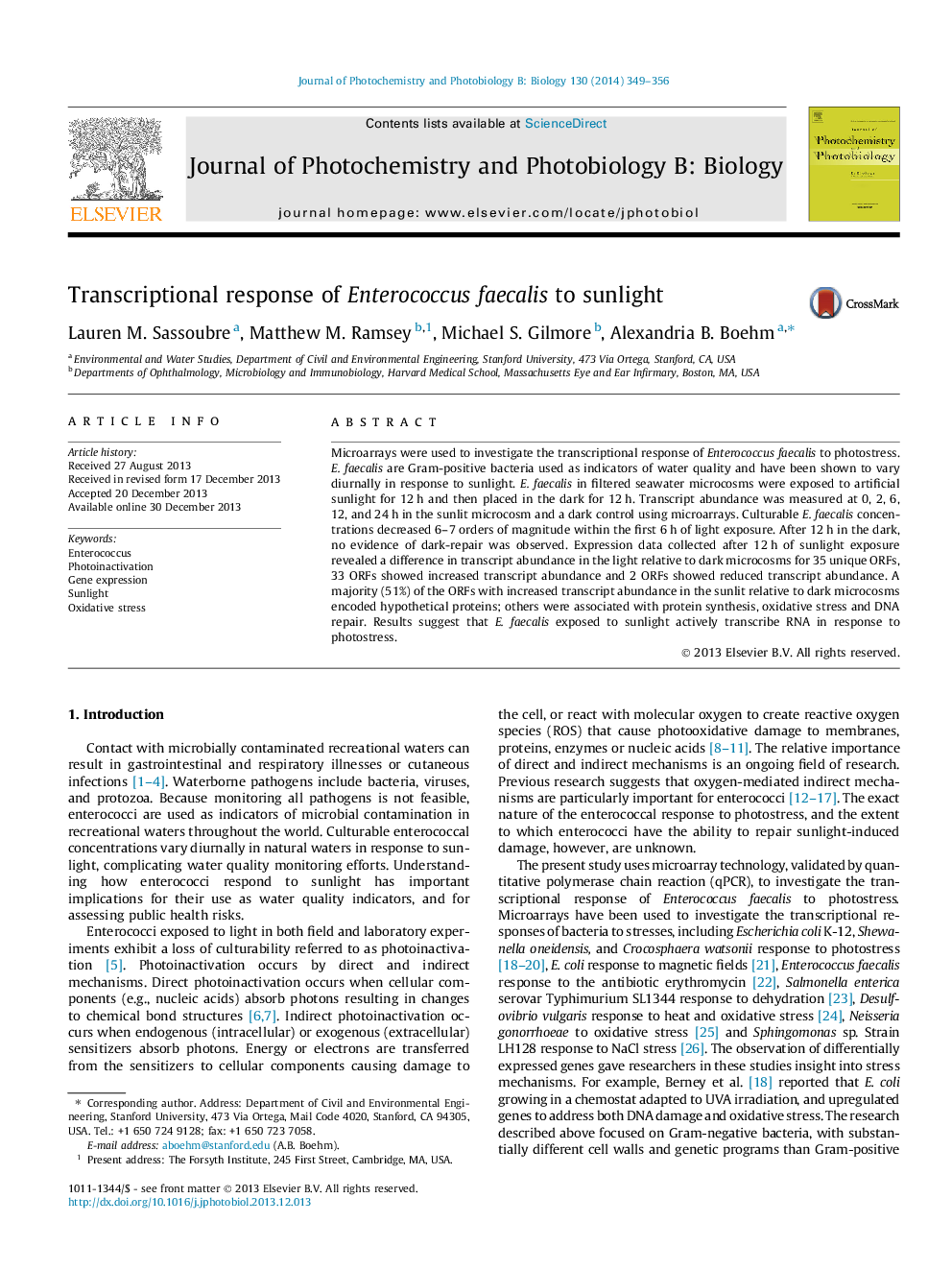| Article ID | Journal | Published Year | Pages | File Type |
|---|---|---|---|---|
| 30458 | Journal of Photochemistry and Photobiology B: Biology | 2014 | 8 Pages |
•After 6 h of sun E. faecalis concentrations decreased 6–7 orders of magnitude.•After 12 h of sun E. faecalis transcribe RNA encoding for ribosomal and stress response proteins.•E. faecalis exposed to sunlight in oligotrophic seawater were not able to repair photo-damage.
Microarrays were used to investigate the transcriptional response of Enterococcus faecalis to photostress. E. faecalis are Gram-positive bacteria used as indicators of water quality and have been shown to vary diurnally in response to sunlight. E. faecalis in filtered seawater microcosms were exposed to artificial sunlight for 12 h and then placed in the dark for 12 h. Transcript abundance was measured at 0, 2, 6, 12, and 24 h in the sunlit microcosm and a dark control using microarrays. Culturable E. faecalis concentrations decreased 6–7 orders of magnitude within the first 6 h of light exposure. After 12 h in the dark, no evidence of dark-repair was observed. Expression data collected after 12 h of sunlight exposure revealed a difference in transcript abundance in the light relative to dark microcosms for 35 unique ORFs, 33 ORFs showed increased transcript abundance and 2 ORFs showed reduced transcript abundance. A majority (51%) of the ORFs with increased transcript abundance in the sunlit relative to dark microcosms encoded hypothetical proteins; others were associated with protein synthesis, oxidative stress and DNA repair. Results suggest that E. faecalis exposed to sunlight actively transcribe RNA in response to photostress.
